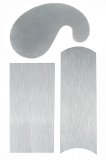Marketing
Dating titebond glue - Po˛ega
New Titebond date code

Dating Site: Dating titebond glue
So I'm wondering, if the Titebond glue works, why don't people use it? The correct move would have been to fire up the glue pot. Dont use Titebond anywhere on the instrument.... Other manufacturers leave a small outline of finish around the bridge to ensure no bare wood is exposed around the edge of the bridge.

Manchmal zeigen wir Ihnen personalisierte Werbung, indem wir anhand Ihrer Aktivitäten auf unseren Seiten und Produkten fundierte Vermutungen über Ihre Interessen anstellen. Today the nut trade continues to be a well-established, ordered, and structured business, and the California walnut is well known as the top quality walnut for the world.

When did Gibson switch from hide glue? - So I was reading up on Liquid Hide Glues... Bridge Glued To A Painted Surface I don't believe I have ever seen this on an expensive instrument.

Titebond Wood Glues: general differences
A thin piece of paper can be used to determine the extent to which the bridge is loose. Melamine glue has a strong initial tack and an open time of around 5 minutes. When braces come loose string tension can change the shape of the top, causing excessive bellying behind the bridge, unsymmetrical bumps in the top and even a concave dip in front of the bridge. I want to do the job properly, to the best of my limited ability. That is what I meant by low resistance to sheer forces. How and why glues work is still a question that is yet to be answered in full and scientists are still researching the processes of adhering one surface to another in order to completely understand it. The only game in town for a long time was hot hide glue, at various strengths and viscosities, and various organic glues rabbit glue, fish glue, rice glue in the East etc. These engines run slow and smooth, but you will need a large lathe and milling machine to take this on. The sapwood of walnut is creamy white, while the heartwood is light brown to dark chocolate brown, occasionally with a purplish cast and darker streaks. If it forms strings, it's kaput.
[Dating sites stuttgart germany|Single salad dating website|Dating site windsor]
Post je objavljen 03.01.2019. u 05:39 sati.